Overview
This article acknowledges the challenges faced by small hotels in creating inviting lobbies that enhance guest comfort and experience. It explores thoughtful design ideas that can truly make a difference. By incorporating diverse seating arrangements, effective lighting, sensory design, and biophilic features, hotels can create a welcoming atmosphere that resonates with visitors. These elements not only uplift the space but also play a significant role in boosting visitor satisfaction and hotel profitability. Various studies and expert insights support this notion, highlighting the positive impact of a well-designed lobby on guests’ overall experience. \n\nImagine walking into a lobby that feels warm and inviting, where every detail has been thoughtfully considered to make you feel at home. This is not just a dream; it’s a reality that can be achieved through careful design. When hotels prioritize guest comfort through these design elements, they address not only aesthetic concerns but also emotional ones. Guests are likely to leave with a sense of satisfaction that encourages them to return. \n\nIn conclusion, enhancing the guest experience in hotel lobbies through thoughtful design is not merely an option; it is a vital step toward fostering lasting connections with visitors. By embracing these ideas, hotels can create spaces that nurture and support their guests, ultimately leading to a more successful and profitable business. Let’s work together to transform these spaces into havens of comfort and joy.
Introduction
In the competitive landscape of hospitality, small hotel lobbies are more than just entryways; they are the heart of the guest experience from the very first moment. These spaces face the challenge of balancing comfort, functionality, and aesthetic appeal, all while embodying contemporary values like sustainability and community engagement. As travelers increasingly seek unique, memorable experiences, the design of hotel lobbies must evolve to reflect these desires, incorporating essential elements such as biophilic design, sensory engagement, and modern technology.
Transforming small hotel lobbies into inviting, multifunctional spaces is not just a design choice; it’s a way to enhance guest satisfaction and contribute to a hotel’s overall success and profitability. Imagine optimizing layouts that invite connection and integrating local art that tells a story. The potential for creating a captivating lobby experience is immense. By understanding these design principles, we can thrive together in today’s hospitality market, ensuring that every guest feels welcomed and valued.
Understanding the Importance of Small Hotel Lobbies
Compact hotel reception areas, incorporating small hotel lobby design ideas, play a vital role in shaping the visitor experience. They serve as the first point of interaction, setting the tone for the entire stay. A thoughtfully designed entrance not only welcomes guests but also nurtures a sense of belonging from the moment they step through the doors.
In 2025, the importance of design is underscored by the fact that 69% of travelers now seek sustainable travel options. This indicates a growing desire for environmentally conscious choices in hospitality, a challenge that can feel overwhelming for many establishments. However, this trend highlights the necessity for organizations to embrace contemporary values while optimizing limited space to provide essential services and comfort.
Striking this balance is crucial for enhancing visitor satisfaction and ensuring a memorable experience. Moreover, the financial implications of entrance layout are significant. For instance, a 3.5% rise in RevPAR performance for accommodations in airport locations in December illustrates how a well-structured entrance can positively impact an establishment’s overall profitability.
As Jordan Hollander, CEO of HotelTechReport, insightfully notes, “The entrance area is the core of the establishment; it establishes the ambiance for the visitor’s experience and can greatly affect their overall perception.” By emphasizing careful planning in small hotel lobby design ideas, establishments can create inviting spaces that resonate with visitors, enhance their experience, and ultimately boost RevPAR.
In this journey of design, we recognize the emotional weight of creating spaces that feel welcoming and connected. Through collaboration and thoughtful design, we can transform challenges into opportunities, ensuring that every guest feels valued and at home.
Key Design Elements for Comfort in Small Hotel Lobbies
Creating a welcoming atmosphere in small hotel lobbies can be a challenge, but focusing on key design elements can make a significant difference in guest experience.
Seating Arrangements: It’s essential to provide a diverse mix of seating options, such as plush sofas, comfortable armchairs, and communal tables. This variety caters to different visitor preferences and encourages social interaction. Kristin Cooke reminds us that thoughtful seating arrangements can truly enhance the overall experience for attendees. She states, ‘the right seating can transform a lobby into a social hub for visitors.’ Incorporating chairs with cushioned seats, armrests, and device charging areas, like those from Holsag by MityLite, can further elevate comfort and functionality.
Lighting: The right lighting plays a crucial role in creating a cozy ambiance. Warm, adjustable lighting options provide flexibility, while maximizing natural light through windows or skylights can invigorate the space, making it feel more open. Current trends suggest that lighting should be both aesthetically pleasing and functional, ensuring ample illumination for reading and socializing.
Color Palette: Choosing calming colors such as soft blues, greens, and neutrals promotes relaxation and comfort. These soothing shades can help establish a tranquil atmosphere, inviting visitors to unwind after their journeys.
Materials: High-quality, durable materials are vital for aesthetics and comfort. Plush fabrics and natural woods not only enhance visual appeal but also create a tactile experience that makes visitors feel at home.
Functional Layout: A well-thought-out layout is essential for easy movement and accessibility. By avoiding clutter and establishing open pathways, visitors can navigate the entrance effortlessly, enhancing their overall experience.
Integrating these elements can transform hotel lobbies into inviting spaces that enhance guest comfort and overall experience. Additionally, investing in high-quality 3D renderings from J. Scott Smith Visual Designs, Inc. can effectively illustrate these design elements, capturing every detail accurately before implementation. Their services include advanced features like thermal scans and drone photogrammetry, which help create detailed visual documentation.
This thoughtful approach not only enhances client understanding and improves stakeholder communication but also aids in identifying issues early in the project. Such foresight ultimately leads to more successful project outcomes. Testimonials from satisfied clients, like Ryan Ferguson, who praised the impressive 3D animation delivered for his church’s new auditorium, further highlight the effectiveness of these visualizations in achieving project objectives.
Creating a Welcoming Atmosphere Through Sensory Design
Creating a welcoming atmosphere in small hotel lobby design can be challenging, but it’s essential for making guests feel at home. Sensory design plays a crucial role in this process, and here are some key elements to consider:
Lighting: Layered lighting techniques can establish a warm and inviting ambiance. By combining ambient and task lighting, you can cater to various activities, enhancing the overall experience for your visitors.
Sound: The sound environment matters too. Utilizing sound-absorbing materials can help reduce noise levels, fostering a tranquil setting. Adding soft background music can elevate the atmosphere even further, creating a soothing backdrop for your guests.
Scent: Don’t underestimate the power of scent. Infusing the space with pleasant aromas, whether through diffusers or natural elements like fresh flowers, can significantly enhance the experience. Scents like lavender or citrus inspire relaxation and freshness, positively influencing visitors’ perceptions.
Textures: Engaging the sense of touch is equally important. Integrating a diverse range of textures in furnishings and decor not only makes the space feel more welcoming but also enhances comfort, encouraging guests to linger and enjoy their surroundings.
Looking ahead to 2025, the importance of sensory arrangement continues to grow. Studies show that sensory experiences in accommodation reviews enhance their perceived usefulness. The current model’s CFI of 0.924 indicates a fair to good level of fit, emphasizing how sensory arrangement can enrich guest experiences. Dr. Andy Myers from Walnut Unlimited highlights, “The senses work together, not in isolation. Engaging all the senses in balance creates stronger message structures from the brain, creating differentiation and stronger memories of the brand experience.” This insight underscores the value of a comprehensive sensory approach in lobby design.
Additionally, a case study titled “Eco-Friendly Accommodations and Customer Satisfaction” explored how environmental practices in eco-friendly establishments relate to customer satisfaction. The findings revealed that sensory aesthetic components significantly influence visitor experiences, particularly in eco-friendly environments. This reinforces the idea that thoughtful sensory arrangement in small hotel lobby design can enhance visitor satisfaction and impressions, making it a vital consideration in the layout of accommodations.
Incorporating Biophilic Elements for Enhanced Guest Experience
Biophilic design emphasizes the vital connection between visitors and nature, significantly enhancing their experience in hotel entrances. However, integrating these elements can feel overwhelming. Here are several thoughtful strategies to seamlessly incorporate biophilic features into small hotel lobbies:
Indoor Plants: Imagine stepping into a space filled with a variety of indoor plants. Not only do they improve air quality, but they also create a calming atmosphere. Consider vertical gardens or carefully arranged potted plants that transform the entrance into a serene oasis, appealing to visitors’ senses and inviting relaxation. For anxious visitors, indoor foliage holds an importance score of 32.99, highlighting its crucial role in the overall design strategy.
Natural Light: Think about how natural light can brighten a space and uplift spirits. Expansive windows or skylights can flood the entrance with sunlight, positively influencing mood and energy levels. This connection to the outdoors helps visitors feel more at ease and engaged with their surroundings.
Water Features: The gentle sound of water can work wonders in enhancing a hotel lobby’s ambiance. Small water features, like fountains, not only provide visual beauty but also create a soothing auditory backdrop, fostering a peaceful and restorative environment for guests.
Natural Materials: Envision the warmth of materials like wood, stone, and bamboo in your furniture and decor. These elements effectively bridge the indoor and outdoor worlds, adding aesthetic value and evoking comfort, making guests feel truly at home.
Research supports the integration of these biophilic concepts, showing that connecting with nature can elevate mood and reduce stress. As Courtney Suess, an Associate Professor, notes, while the attributes of indoor landscaping are not exhaustive, they play a vital role in defining biophilic spaces. Engaging in physical activities in natural settings not only offers exercise benefits but also promotes restorative effects, leading to improved well-being.
Looking ahead to 2025, the trend toward biophilic aesthetics in small hotel lobby design continues to flourish. Numerous small hotels have successfully implemented these ideas, reporting enhanced visitor satisfaction and comfort. This demonstrates the tangible benefits of integrating nature into their designs. Future studies, such as the case study ‘Future Directions for Biophilic Design Research,’ are likely to explore the relationship between service quality and these natural elements, further enriching visitors’ experiences.
J. Scott Smith Visual Designs embodies this unique approach, blending artistic vision with technical expertise to craft immersive environments that resonate with visitors. Together, we can create spaces that not only meet practical needs but also nurture the spirit.
Designing Communal Spaces for Social Interaction
Implementing small hotel lobby design ideas that include communal areas can significantly enhance visitor interaction and satisfaction. Imagine walking into a space that feels welcoming and encourages connection—this is the essence of thoughtful design.
Flexible seating arrangements are key. By incorporating movable furniture, you create adaptable spaces that can cater to various group sizes and activities. This flexibility allows individuals to rearrange seating as needed, fostering a sense of comfort and community.
Consider the power of social zones. Designate specific areas for socializing, such as cozy nooks with comfortable seating or communal tables. These spaces invite guests to gather, encouraging connections that can lead to lasting friendships.
Interactive features also play a vital role. Incorporating engaging elements like games, books, or digital displays invites visitors to interact with one another. This not only enhances the overall experience but also nurtures a sense of belonging within the hotel environment.
Refreshment stations can further foster a relaxed atmosphere. Setting up coffee or snack stations allows visitors to mingle and unwind, encouraging casual interactions that can blossom into meaningful connections.
The importance of social interaction in hotel lobby design cannot be overstated. Studies show that thoughtful design enhances visitor satisfaction and adds to an establishment’s overall attractiveness. In fact, statistics indicate that hotels focusing on communal areas experience a notable rise in favorable visitor feedback.
As the hospitality sector evolves, understanding the needs and preferences of patrons becomes essential. A recent study highlighted a disconnect between management’s perceptions and community needs, emphasizing the importance of long-term engagement over one-off donations. This disconnect is evident in the financial implications seen in the broader industry, such as WeWork’s net loss of $1.6 billion last year, underscoring the necessity of prioritizing visitor satisfaction and communal areas in design.
Moreover, insights from community leaders about the need for care centers resonate with the importance of creating spaces that cater to community needs, particularly for vulnerable populations like the elderly. By utilizing small hotel lobby design ideas that encourage social interaction, establishments can craft atmospheres that resonate with visitors and promote a sense of belonging, ultimately improving their overall experience.
Additionally, integrating technology, as highlighted in case studies on advancements in hospitality, can enhance communal spaces and improve visitor experiences, particularly in the context of contactless services. By embracing these design ideas, we can create environments that not only look inviting but also feel like home.
Leveraging Technology to Enhance Guest Comfort
Integrating technology into small hotel lobby design ideas can significantly enhance visitor comfort and convenience. It’s important to recognize the challenges travelers face today and how thoughtful design can alleviate those concerns. Here are some innovative ideas to consider:
Digital Concierge Services: Imagine interactive kiosks or tablets acting as digital concierges, offering visitors instant access to hotel services, local attractions, and streamlined check-in options. This not only enhances the visitor experience but also caters to the growing preference for self-service solutions among travelers. Importantly, ensuring visitor data protection will be a top priority, as emphasized by Dr. Rik van Leeuwen, Head of Data.
Charging Stations: Picture numerous charging points throughout the entrance area, essential for visitors to recharge their devices. With Gen Z making up about 30% of the global population, their expectation for connectivity makes this feature a must-have for modern hotels.
Wi-Fi Access: High-speed Wi-Fi should be readily available in the lobby, enabling visitors to work, browse, or connect with loved ones seamlessly. This accessibility is crucial for maintaining productivity and enhancing the overall visitor experience, especially for younger travelers who prioritize connectivity.
Smart Lighting: Consider implementing smart lighting systems that adjust based on occupancy and time of day. This creates a welcoming atmosphere while conserving energy. Such an approach not only enhances comfort but also aligns with small hotel lobby design ideas that reflect the sustainability trends currently shaping the lodging industry.
Virtual Reality Experiences: Envision providing virtual reality stations where visitors can explore accommodations or local attractions. This immersive experience can elevate their stay, making the establishment memorable.
Mobile Check-In and Room Selection: Allowing visitors to check in via a mobile app and choose their rooms enhances convenience and personalization. This trend is becoming increasingly significant as visitors seek transparency and control over their accommodation experience, particularly in light of frustrations with hidden fees.
Feedback Kiosks: Installing kiosks for real-time feedback can empower hotels to address visitor concerns promptly. This proactive approach not only enhances service but also fosters trust, especially during times when hidden fees can irritate luxury visitors.
Art and Technology Integration: Imagine incorporating digital art displays that change based on the time of day or season. This creates a dynamic and engaging entrance environment, enhancing the aesthetic appeal of the space.
Sustainable Practices: Using eco-friendly materials in entrance furnishings and decor can resonate with environmentally aware visitors. This commitment to sustainability is increasingly important in the hospitality sector, aligning with current trends.
Staff Training on Technology: Investing in comprehensive training programs for staff on new technologies ensures they can provide personalized service while utilizing these tools effectively. As illustrated in a case study on training staff to use new technology, such investments lead to successful outcomes and are essential for maintaining visitor satisfaction.
Sustainable Design Practices for Modern Hotel Lobbies
Sustainable design practices are becoming increasingly essential for contemporary venues, resonating with environmentally aware guests and enhancing their overall experience. It’s important to recognize the challenges that come with creating spaces that honor our planet. Here are key strategies to consider:
Eco-Friendly Materials: Imagine the warmth of reclaimed wood, the charm of recycled metal, and the freshness of low-VOC paints. Incorporating these sustainable materials not only contributes to a healthier environment but also adds a unique aesthetic to entrance areas. These choices can significantly reduce the ecological footprint of accommodation construction and decor.
Energy Efficiency: Think about how energy-efficient lighting and HVAC systems can transform lobby areas. By utilizing LED lighting and intelligent climate control technologies, accommodations can achieve substantial energy savings while creating a comfortable environment for visitors. This not only helps the planet but also enhances the guest experience.
Water Conservation: Consider the impact of installing water-saving fixtures, such as low-flow faucets and toilets, alongside rainwater harvesting systems for landscaping. These measures not only conserve water but also align with the growing consumer demand for responsible resource management in the hospitality sector.
Waste Reduction: Promoting recycling and composting initiatives within the lobby encourages guests to participate in sustainability efforts. By offering clearly labeled containers and details on the significance of waste reduction, establishments can nurture a culture of environmental responsibility among their patrons.
The worldwide market for accommodation interior styling services is expected to attain $7.8 billion by 2027, emphasizing the growing focus on eco-friendly practices in the sector. As seen with Choice Hotels’ commitment to using cage-free eggs in all properties by 2025, the hospitality sector is responding to consumer demands for ethical sourcing and sustainability. Furthermore, Wyndham’s achievement of 100% gender equity in pay for its executive team in 2021 underscores the industry’s shift towards inclusivity and responsible practices, which are becoming increasingly important to patrons today.
Additionally, CitizenM’s innovative approach to modular construction, which reduces supply chain costs and waste to around 2%, exemplifies how sustainable design can be effectively implemented in lodging projects. Together, we can create spaces that not only meet the needs of today but also honor the future.
Personalizing the Lobby Experience with Local Art and Decor
Creating a small hotel lobby that truly reflects the local culture can feel like a daunting task. However, integrating regional art and decor into your design not only establishes a unique ambiance but also fosters memorable experiences for your visitors. Here are some nurturing ideas to consider:
- Local Artists: Imagine collaborating with local artists to showcase their work in your entrance area. This approach not only highlights the richness of the region’s culture and creativity but also supports the local art community. As Robson, curator director at the Meadows Foundation, beautifully expressed, “They brought this part of the city back to life… This partnership can convert the reception area into a lively cultural center, making your venue a cherished community destination.
- Cultural Elements: Think about incorporating decor that reflects the local heritage, such as textiles, pottery, or historical artifacts. This thoughtful approach resonates with over 90% of respondents who believe that including local art effectively supports the community, allowing your hotel to embody the spirit of its surroundings.
- Rotating Exhibits: Consider implementing rotating art displays to keep your lobby dynamic and engaging for returning visitors. This not only showcases a range of local talent but also encourages return visits, as guests will be eager to experience new installations.
- Storytelling: Providing narratives about the artists and the significance of their works can create a deeper connection between visitors and the local culture. This storytelling element enhances their overall experience. Recent studies even indicate that art in hospitality can serve therapeutic purposes, inspiring and comforting visitors. When thoughtfully integrated, artwork can profoundly influence guests’ perceptions and experiences in your lodging environment.
- Cultural Tourism: Recognizing the role of local art in enhancing the cultural tourism market is essential. By incorporating local art, your accommodations can attract cultural travelers seeking authentic experiences, ultimately enriching the visitor experience while supporting the local economy.
By adopting these nurturing strategies, you can create welcoming spaces that embody local culture and improve visitor comfort. This reflects small hotel lobby design ideas and ultimately leads to a more fulfilling experience for everyone involved.
Optimizing Layout and Flow for Guest Convenience
Optimizing the layout and flow of small hotel lobby design ideas is essential for enhancing visitor convenience and overall experience. We understand that navigating a lobby can sometimes feel overwhelming. With over twenty years of experience in the industry, J. Scott Smith Visual Designs highlights the importance of thoughtful design in creating inviting spaces that truly welcome everyone. Here are several strategies to consider:
Clear Pathways: Establish unobstructed pathways that seamlessly guide visitors from the entrance to the reception and seating areas. This not only improves navigation but also creates a warm, welcoming atmosphere.
Zoning: Implement distinct zones for various activities, such as check-in, relaxation, and socializing. This strategic zoning reduces congestion and allows visitors to engage in their desired activities without feeling crowded.
Furniture Arrangement: Thoughtfully arrange furniture to encourage conversation while ensuring ample open spaces for movement. This balance fosters a comfortable atmosphere where visitors can interact freely.
Signage: Incorporate clear and intuitive signage to direct visitors to essential areas, including restrooms, elevators, and amenities. Effective signage enhances the visitor experience by reducing confusion and improving accessibility.
Versatile Spaces: Design adaptable areas that can meet the varied needs of visitors. Utilizing flexible layouts and adaptable furnishings allows for easy reconfiguration based on the time of day or specific events, catering to different visitor requirements.
Accessibility Considerations: As emphasized in a recent case study on integrating accessibility in public spaces, many designs overlook the needs of individuals with mobility challenges. By integrating features like stair climbers, we not only enhance accessibility but also complement the overall layout, ensuring all guests can navigate the space comfortably.
Elegant Design Elements: The lobby should create a memorable first impression. Incorporating small hotel lobby design ideas with elegant style elements and inviting decor can significantly enhance the aesthetic appeal and comfort of the space.
Visitor Flow Statistics: Recent studies suggest that enhancing visitor movement in accommodation design can lead to greater satisfaction. For instance, analyzing traffic patterns and adjusting layouts accordingly can create a more enjoyable experience for visitors, as supported by industry statistics.
Expert Insights: As Emma-Jane Persey, founder and business leader, notes, “Most reception areas feature a staircase, be it a grand sweeping level 1 access or a functional ascent to other levels.” This emphasizes the significance of incorporating functional features that accommodate all visitors, reinforcing the necessity for careful layout planning.
Continuous Improvement: Regularly evaluate and enhance reception layouts based on visitor feedback and evolving trends in accommodation styling. Remaining aware of the changing requirements of visitors guarantees that the area stays a cozy and welcoming environment.
Innovative Design Ideas to Make Your Lobby Stand Out
Creating a welcoming atmosphere in small hotel lobbies can be a challenge, but there are innovative design ideas that can truly make a difference:
Interactive Displays: Imagine digital displays that not only highlight local events and attractions but also showcase your accommodation services. This engaging entry experience can adapt to different times of day, offering relevant information that invites interaction. Studies show that such displays can enhance visitor engagement by up to 30%, making them a worthwhile investment for your lobby.
Unique Furniture: Think about selecting statement furniture pieces that reflect your hotel’s brand identity. This approach not only adds visual interest but also encourages guests to linger and enjoy the space, fostering a sense of comfort and belonging. As David Buffery, senior design director, wisely observes, “Hotel design will continue to prioritize spaces that cater to a range of visitor experiences.”
Art Installations: Consider incorporating striking art installations or sculptures that can serve as focal points and conversation starters. These pieces can resonate with regional culture or align with your establishment’s theme, enhancing the visitor experience and making a lasting impression.
Flexible Spaces: Envision areas that can be easily reconfigured for various events, such as pop-up markets or social gatherings. This versatility not only enhances functionality but also caters to both leisure and business travelers. It aligns beautifully with the trend of ‘bleisure’ travel, where guests seek both work and leisure opportunities during their stay. A case study titled “Bigger Lobbies Enhance the Visitor Experience” illustrates how modern lobbies have evolved into dynamic spaces that serve multiple purposes, ultimately improving visitor satisfaction.
Sustainability: Lastly, think about incorporating elements that align with the Green Key certification, an international eco-label awarded to establishments that meet strict sustainability criteria. This not only appeals to environmentally conscious visitors but also enhances your establishment’s reputation.
By thoughtfully integrating these innovative small hotel lobby design ideas, you can create memorable experiences that cater to the evolving needs of today’s travelers. Together, let’s transform your lobby into a space that welcomes and resonates with every guest.
Conclusion
Transforming small hotel lobbies into inviting, multifunctional spaces is not just a design choice; it’s a heartfelt commitment to enhancing guest experiences and driving profitability in a competitive hospitality market. We understand that thoughtful design is essential in creating welcoming environments that resonate with guests from the moment they arrive. Key elements like:
- seating arrangements
- lighting
- color palettes
- materials
are vital in fostering comfort and functionality, ultimately enhancing guest satisfaction.
Incorporating sensory design techniques can elevate the atmosphere even further, engaging all five senses to create a truly memorable experience. Imagine the warmth of natural light and the calming presence of indoor plants connecting guests with nature, promoting relaxation and well-being. The emphasis on communal spaces nurtures social interaction, while integrating technology and sustainable practices meets modern travelers’ expectations for convenience and environmental responsibility.
Ultimately, the success of small hotel lobbies hinges on their ability to reflect the values and preferences of today’s guests. By embracing innovative design ideas and prioritizing local culture through art and decor, hotels can distinguish themselves in a crowded marketplace. This holistic approach not only enhances the guest experience but also contributes to the long-term success and profitability of the establishment. As the hospitality industry continues to evolve, investing in lobby design will remain a critical strategy for attracting and retaining guests in the future. Together, let’s create spaces that truly feel like home.
Frequently Asked Questions
Why are compact hotel reception areas important for visitor experience?
Compact hotel reception areas are crucial as they serve as the first point of interaction for guests, setting the tone for their entire stay and nurturing a sense of belonging from the moment they enter.
What trends are influencing hotel design in 2025?
In 2025, 69% of travelers are seeking sustainable travel options, highlighting the growing demand for environmentally conscious choices in hospitality. This trend emphasizes the need for hotels to incorporate contemporary values while optimizing limited space.
How does the entrance layout impact a hotel’s financial performance?
A well-structured entrance can significantly enhance visitor satisfaction and profitability, as evidenced by a 3.5% rise in RevPAR performance for accommodations in airport locations.
What are some key design elements for creating a welcoming small hotel lobby?
Important design elements include diverse seating arrangements, effective lighting, a calming color palette, high-quality materials, and a functional layout to enhance guest comfort and experience.
How does lighting contribute to the atmosphere in hotel lobbies?
The right lighting creates a cozy ambiance, with warm, adjustable options and natural light maximizing openness, ensuring the space is both aesthetically pleasing and functional.
What role do colors play in hotel lobby design?
Calming colors such as soft blues, greens, and neutrals promote relaxation and comfort, helping to establish a tranquil atmosphere for guests.
Why are sensory design elements important in hotel lobbies?
Sensory design elements like lighting, sound, scent, and textures enhance the overall guest experience by creating a warm, inviting atmosphere and fostering a sense of relaxation.
What are some effective sensory design strategies for hotel lobbies?
Effective strategies include using layered lighting for ambiance, sound-absorbing materials to reduce noise, pleasant aromas for a welcoming scent, and a variety of textures in furnishings to enhance comfort.
How can thoughtful design transform hotel lobby spaces?
Thoughtful design can create inviting spaces that resonate with visitors, enhance their experience, and ultimately improve overall satisfaction and impressions of the establishment.
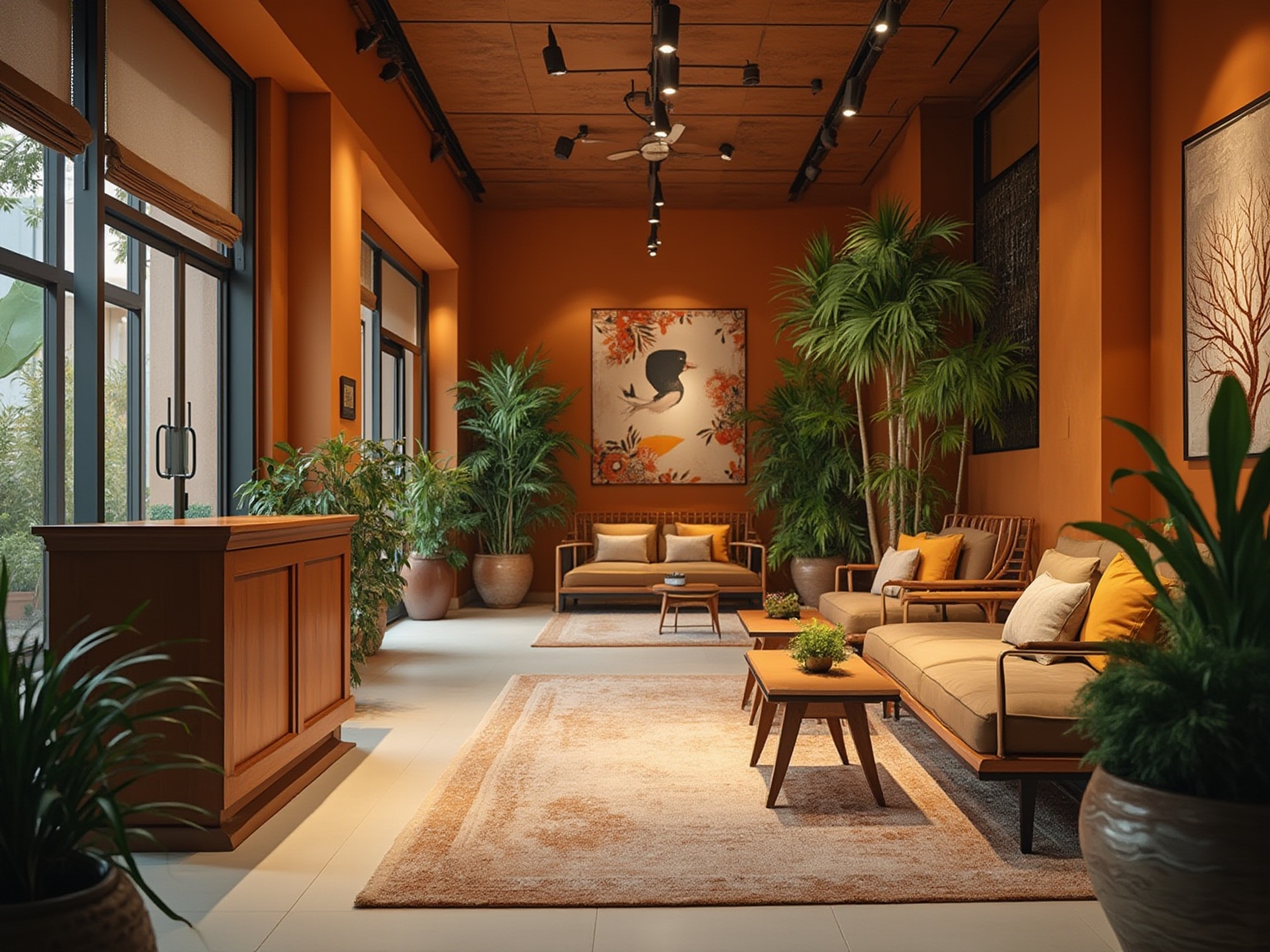
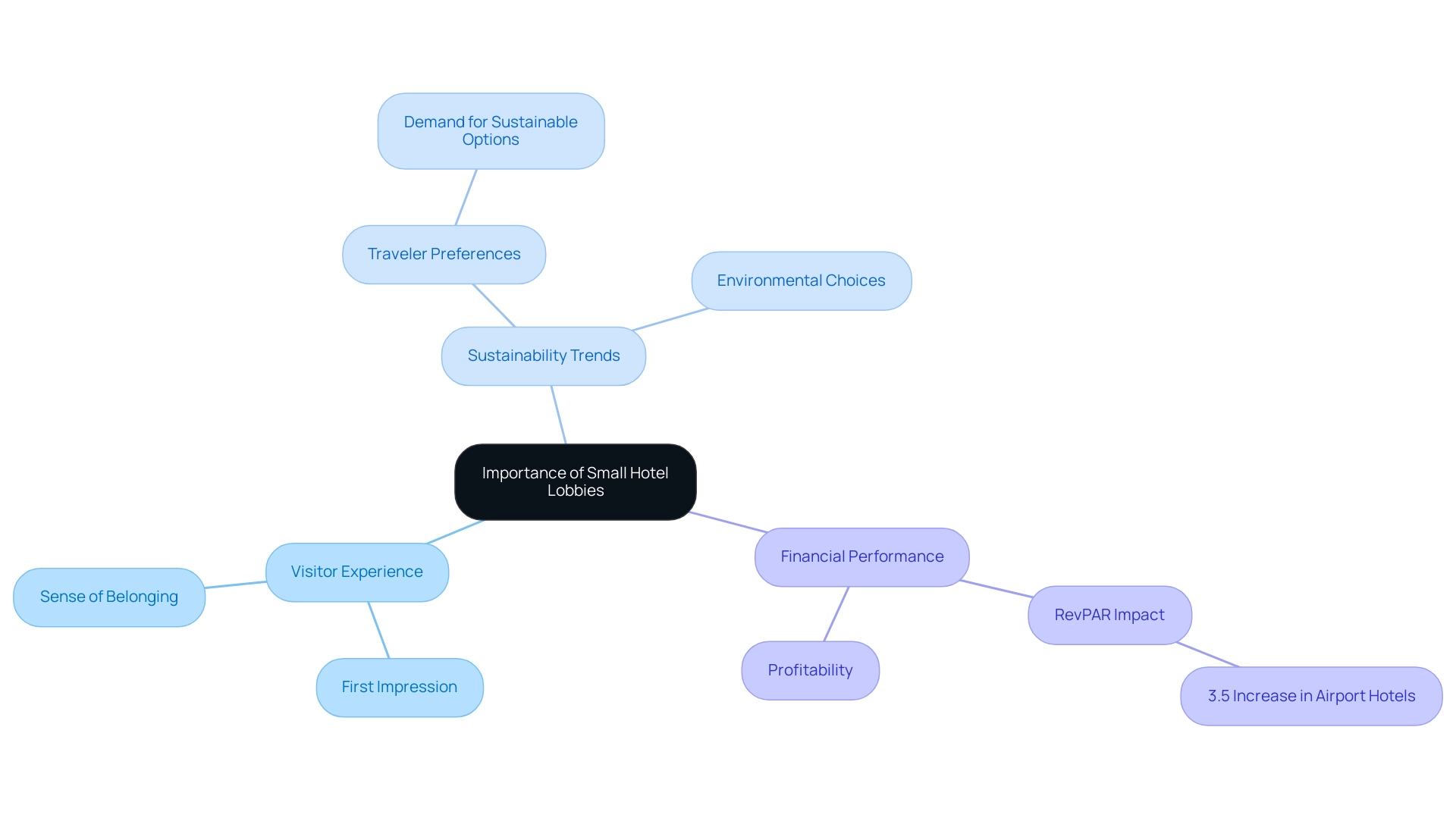
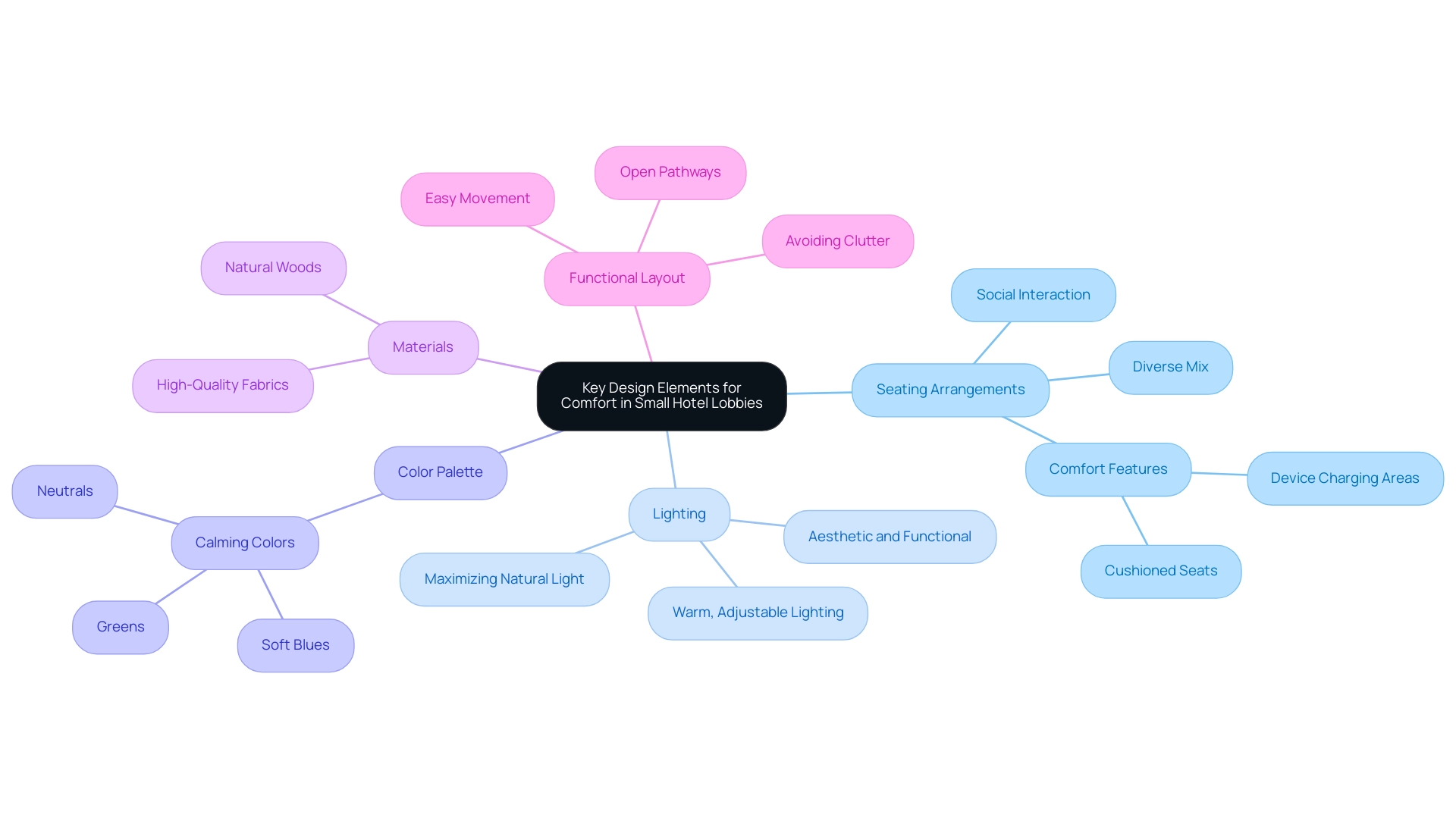
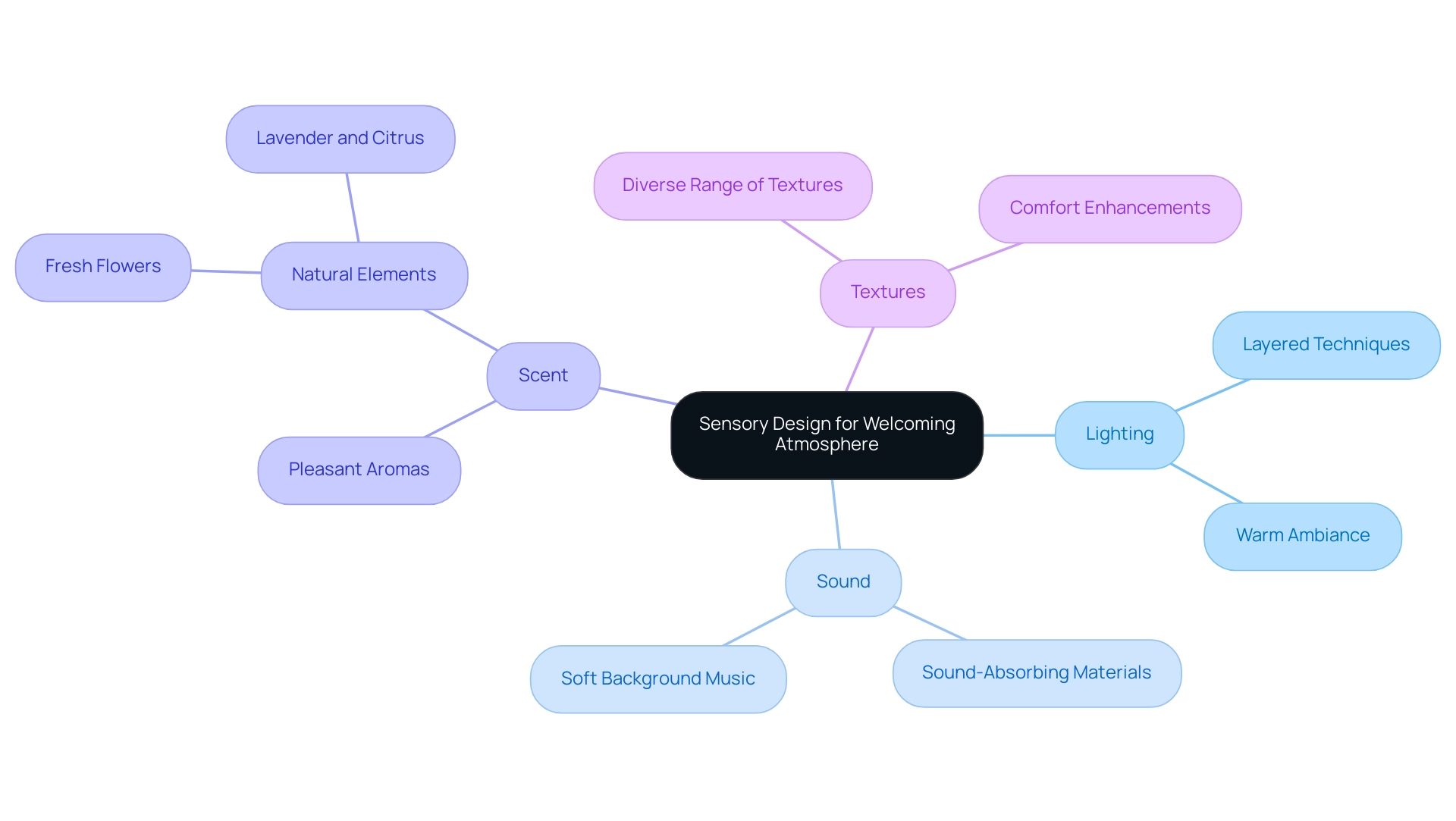


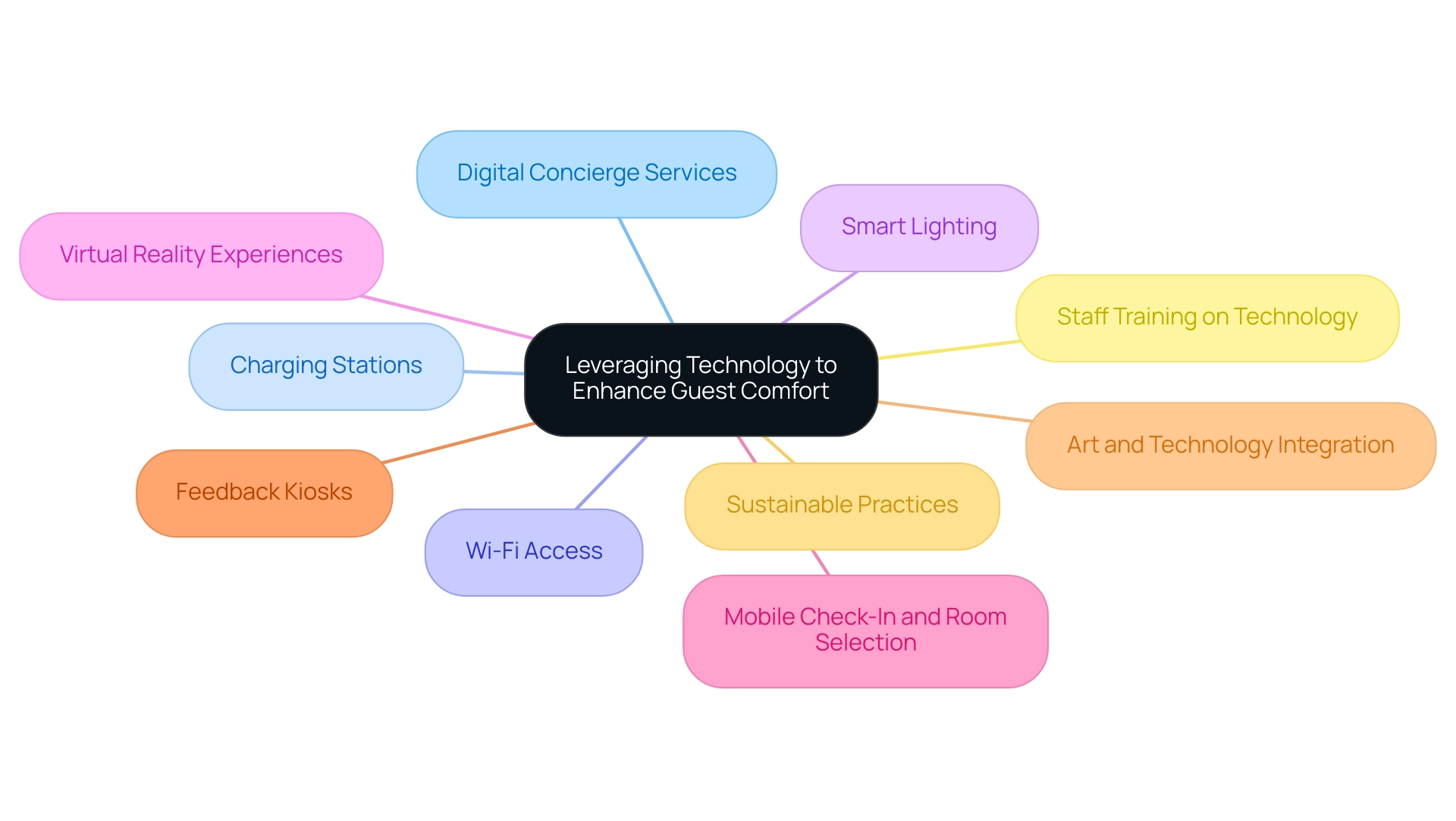
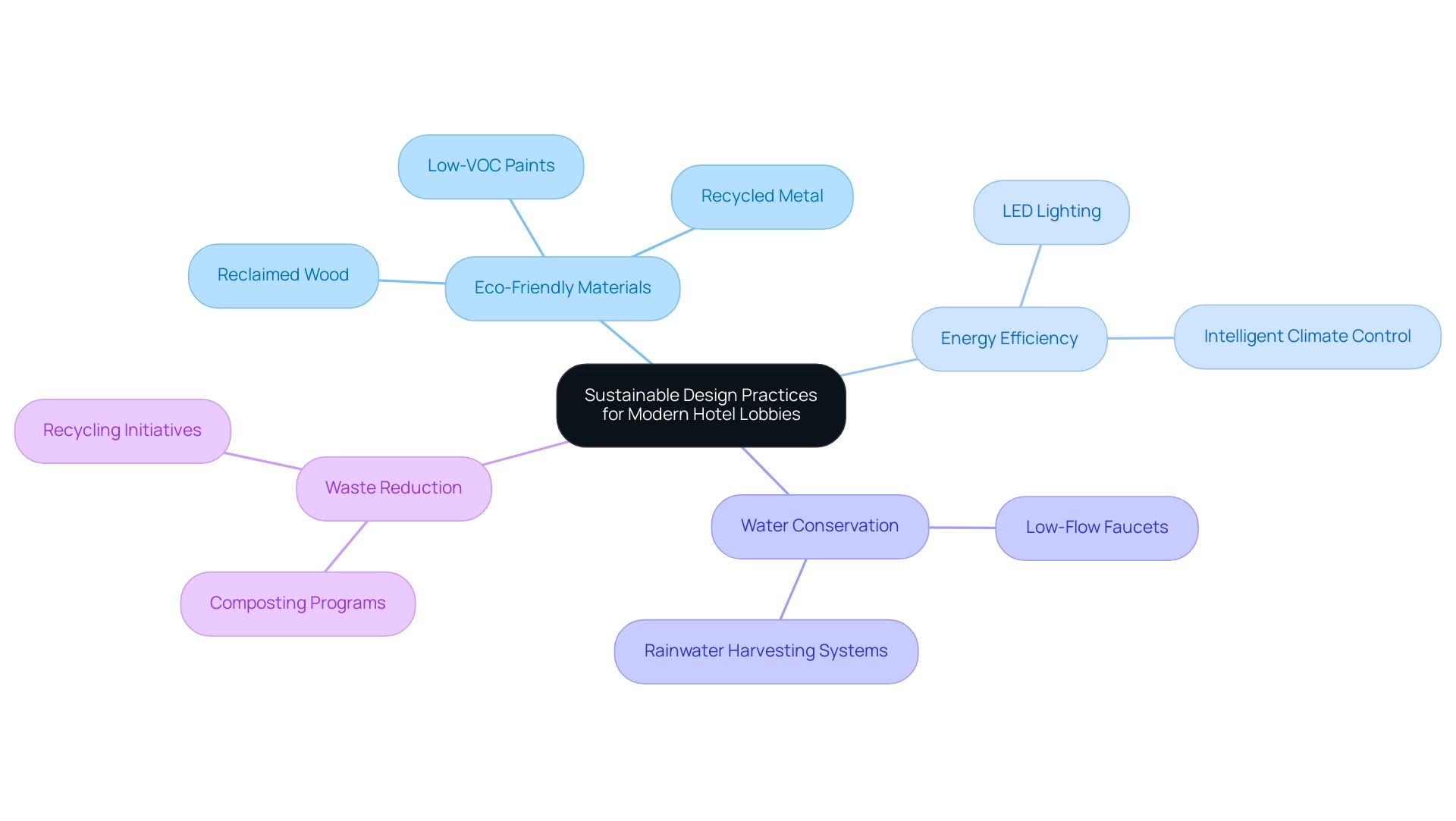
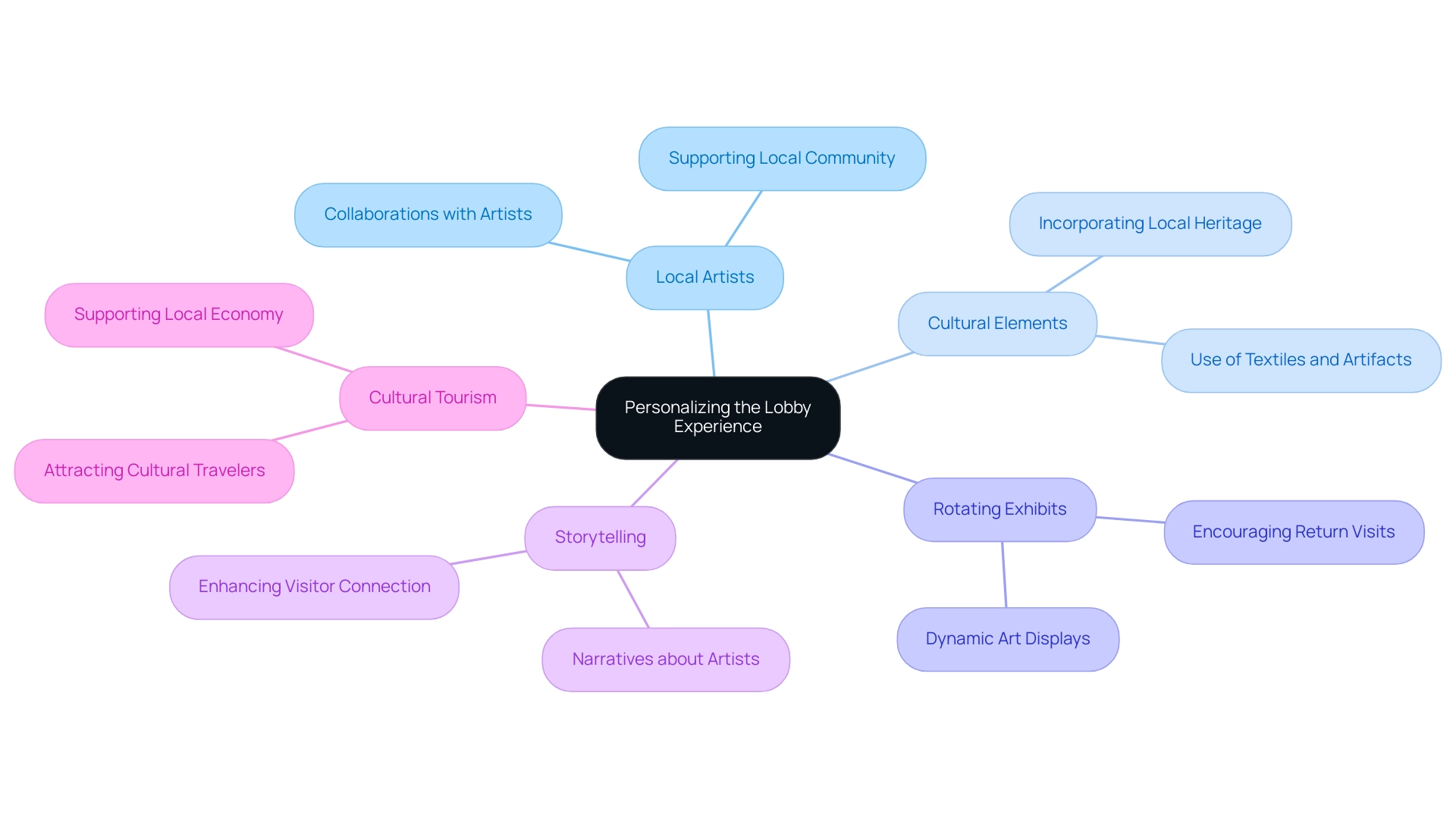
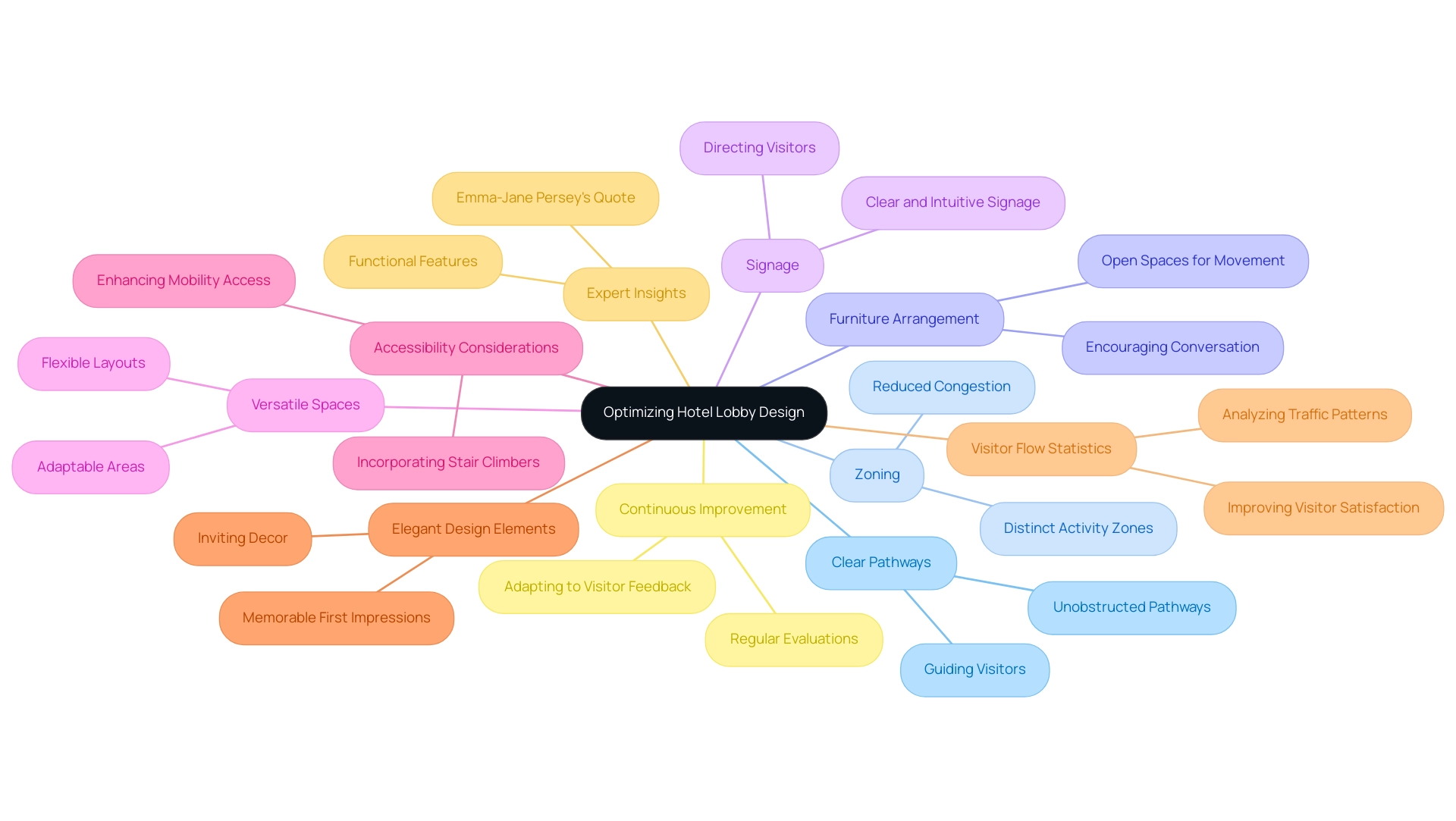
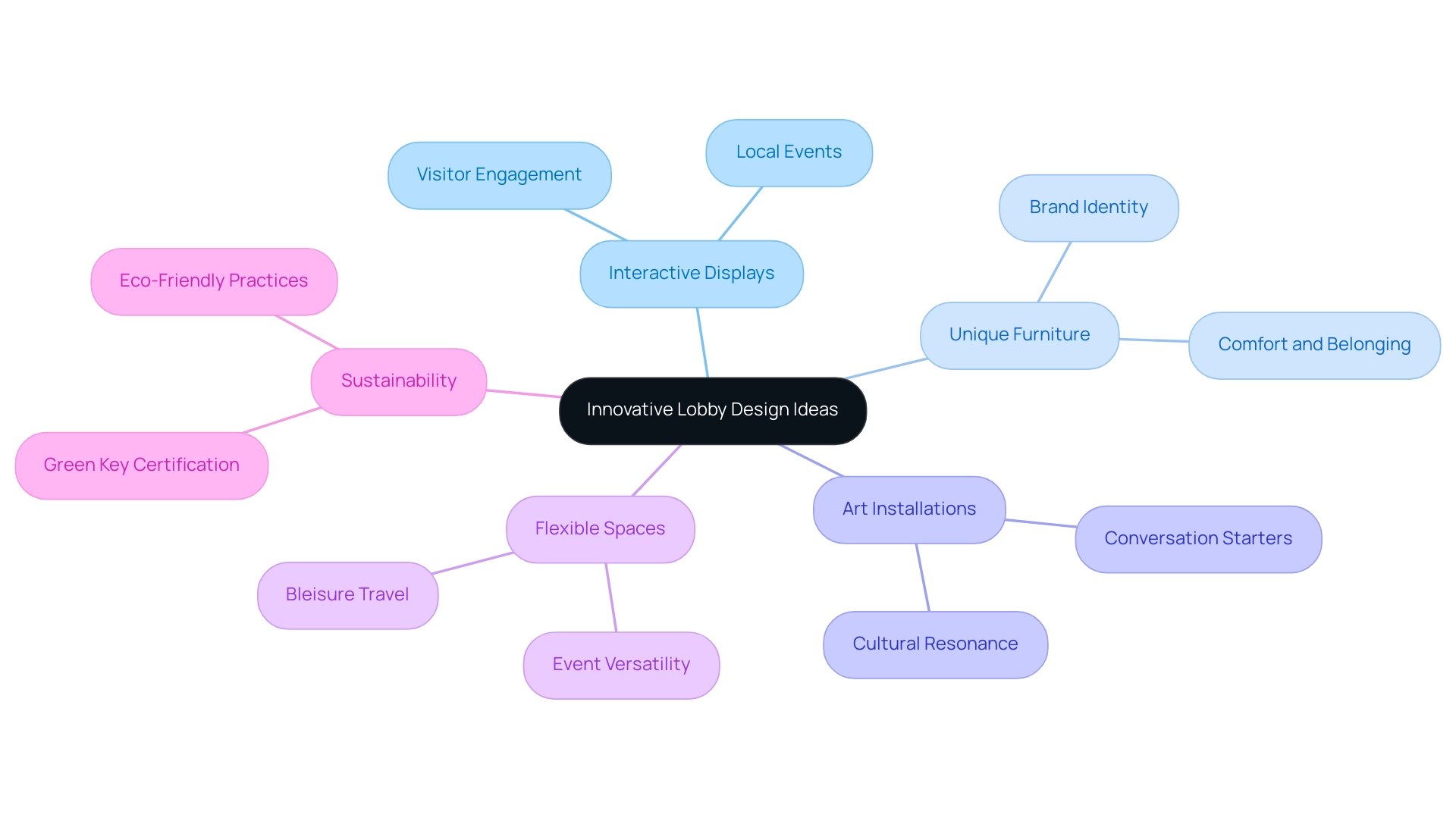
0 Comments